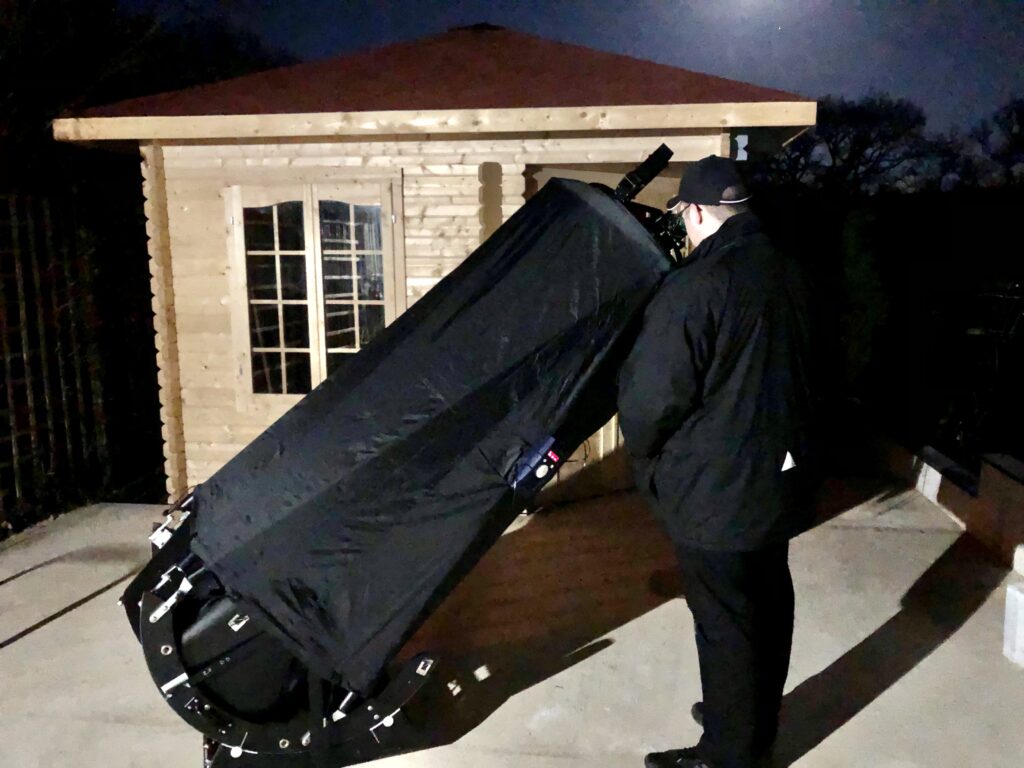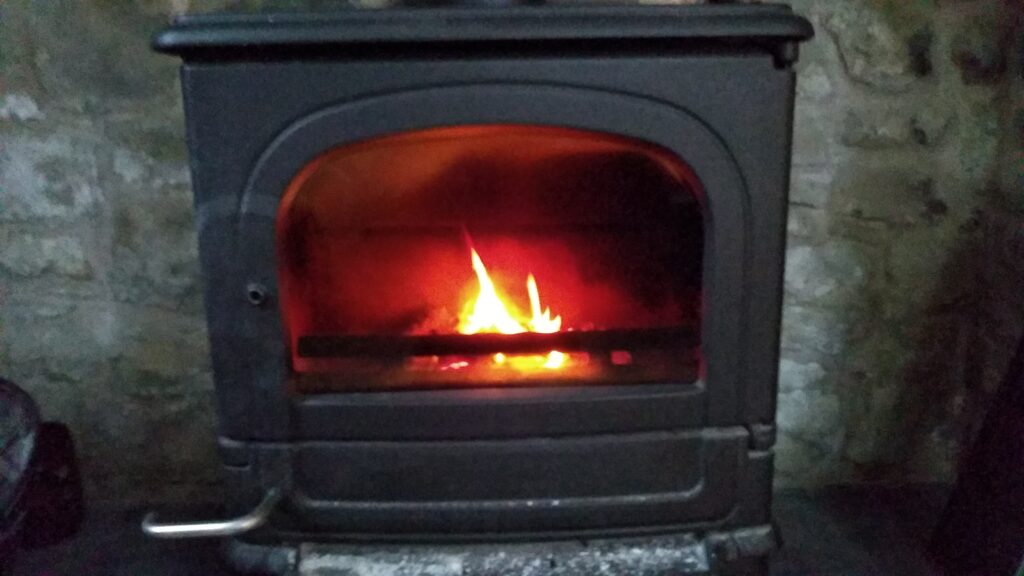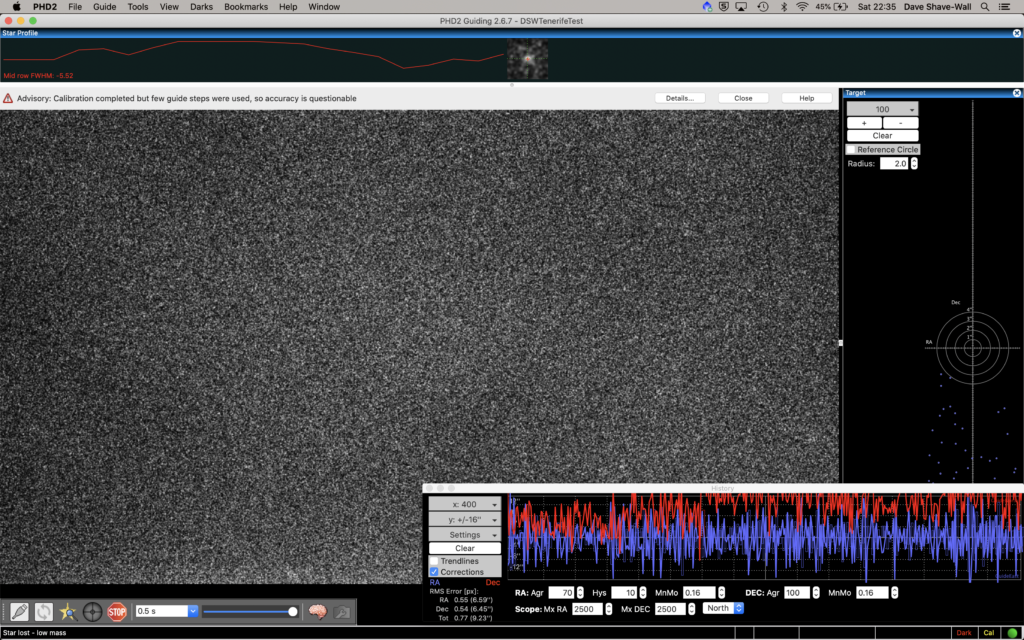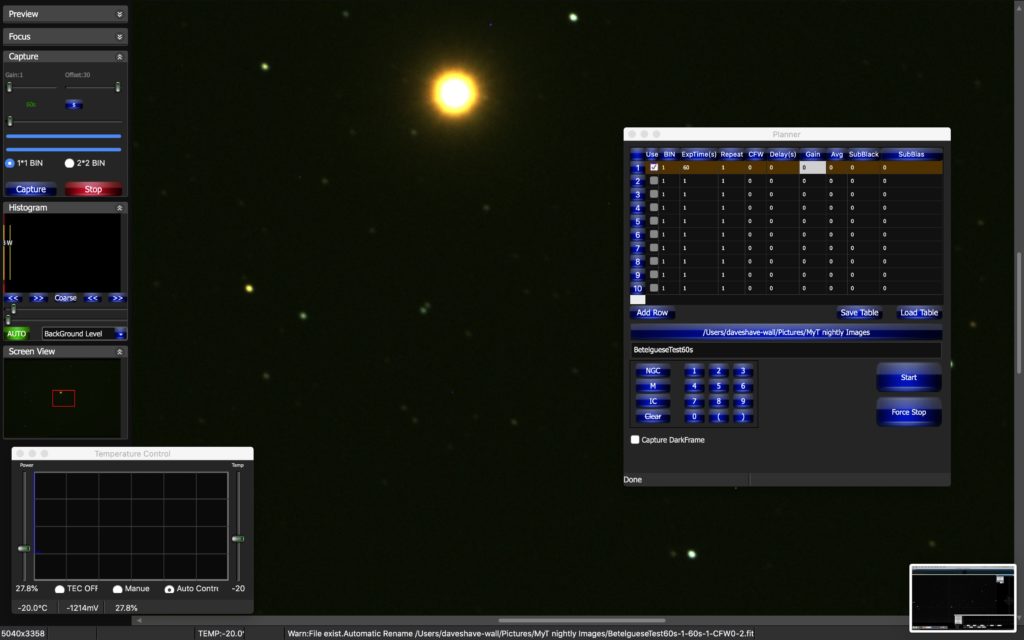20:00 – 23:00
So after a successful day at The Practical Astronomy show it was time to head on out to play with my new toys. In this case a new 31mm Nagler Type 5 2″ eyepiece that I purchased from Owen Brazzel.
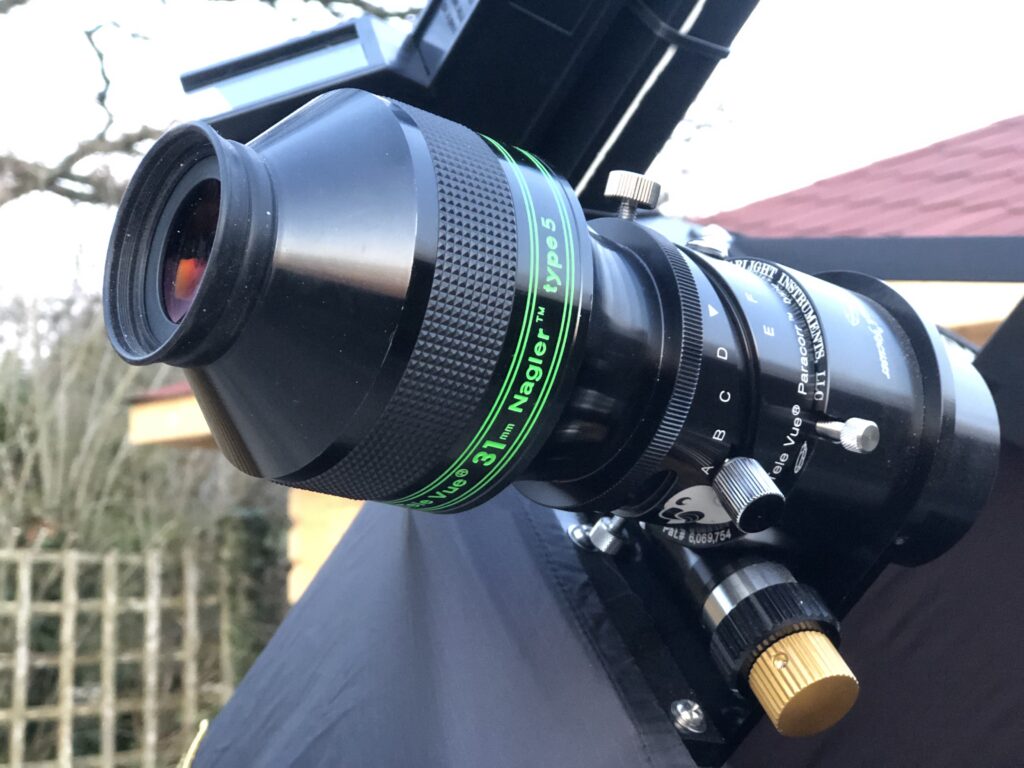
The other aim tonight was to setup the Argo Navis computer to allow me to find objects in the night sky on the 22″. Owen had said to me at the show that this is a must else I would find it difficult to star hop from one object to another without it, which was proved out the last time Bob and I ventured out.
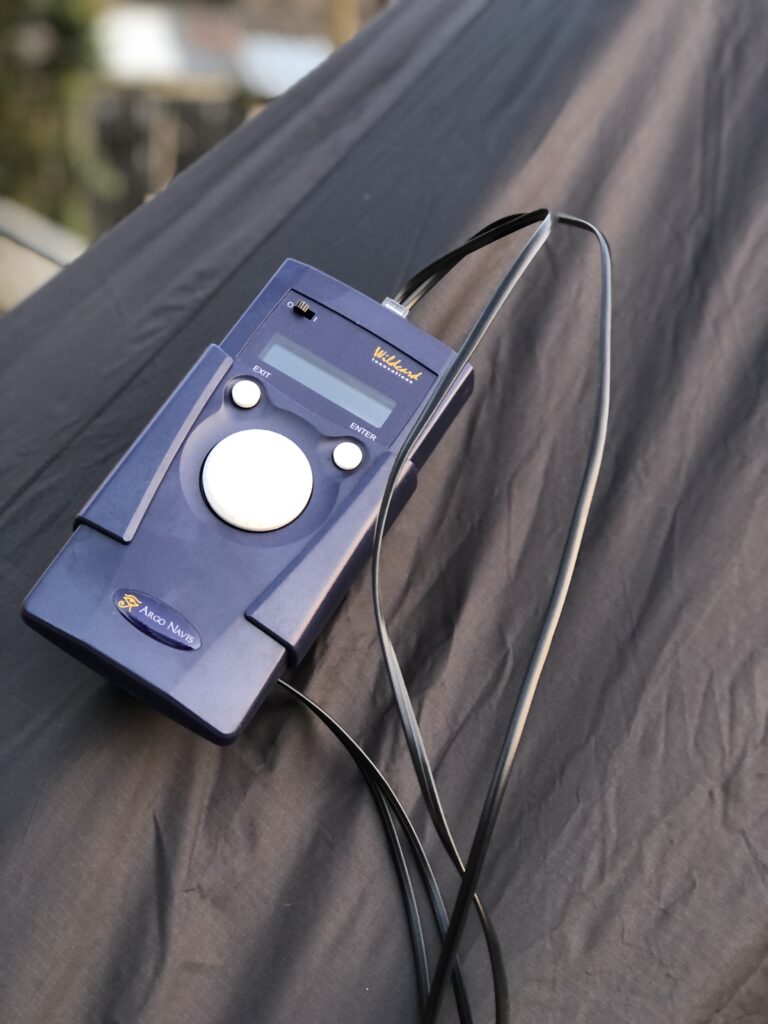
So I went to the Workshop where the Dob is stored and took it out onto the observing space and started to put it together. It only takes about 15-20 mins and then I set about collimating quickly with the laser collimator.

Once done I fitted the Paracorr optical corrector followed by the 2″ eyepiece. I then set about putting the cables in for the Argo Navis computer and clipping it onto the side of the 22″.
It took me over an hour to finally setup the computer, in the main I did not RTFM and finally succumbed like all good blokes to reading the manual. It was them extremely straight forward. I had a good look through the menus to familiarise myself, but really the only thing to do was to identify 2 stars. The process for this must be followed for it to work correctly.
So I selected Mode Align Star option form the menu clicking the Enter key, then selected a star using the Dial, in this case BETELGEUSE came up. Now DO NOT PRESS ENTER!! Put the star in the centre of the eyepiece and then press the Enter button. Then WARP= +0.00 (1) should appear briefly meaning 1 star is aligned. Now using the Dial select another star (in this case SIRIUS) and repeat. Once you select ENTER then you see WARP= +0.00 (A) which means aligned. Now you are good to go and use the catalogue to tour the night sky.
I then selected some objects including M42, which looked lovely but low, the double double which really allowed the eyepiece quality to show off its abilities. I went round few other objects and Luke came out too, In fact to be fair he helped me get the computer working and then we shared the views in the scope. It was a good evening. We then between us took the scope apart and put it back in it’s home.
